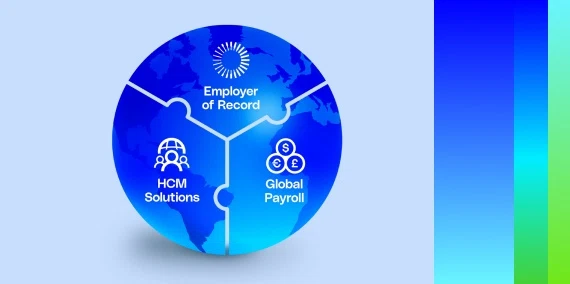When expanding to a new country, rules related to residency and work visas can look complex and bureaucratic at first glance. If your company is planning a move to Austria with a team of international workers, you need to know how to obtain work visas in Austria for each person to stay compliant.
Types of work visas in Austria
Not every international worker who enters Austria needs a visa. For example, European Union (EU), European Economic Area (EEA), and Swiss nationals do not need a visa. However, all applicants from outside these areas must apply at the closest Austrian embassy or consulate general in person.
Since Austria falls within the European Schengen zone, all nationals from other countries will need to apply for a Schengen visa as a first step to enter the country either for business or travel reasons.
Some of the types of visas in Austria include:
- Red-White-Red Card: This work permit is valid for 24 months and allows applicants to live and work in Austria. However, employees can only work for the employer specified in the application and must fall into a specific category.
- Students’ residence permit: After completing studies or relevant training, student residence permit holders can renew the permit for 12 more months to find a job or start a business.
- Jobseeker visa: This visa is only for highly qualified workers. It is an option for those who want to move to Austria for 6 months to find a job. To be eligible for this type of visa, applicants must achieve a minimum of 70 qualifying points based on specific criteria.
- EU Blue Card: As an alternative to the Red-White-Red Card, the EU Blue Card is a residence permit granted to third-country nationals who are particularly highly qualified academics. It’s for a temporary settlement and may provide limited access to the labor market.
- Business visa: Individuals visiting Austria for business activities for less than 6 months can apply for a business visa to stay compliant. Austria has agreements with some countries that allow citizens to visit for up to 90 days without needing a visa.
Requirements to obtain Austria work visas
Austria uses a points-based system to help determine which category applicants fall under, including highly qualified workers, skilled workers who can fill shortages, startup founders, graduates of local higher education institutions, self-employed key workers, and other key workers. These categories then help determine what type of visa the applicant is eligible for.
All of these categories are eligible for a Red-White-Red Card, which is what most non-nationals apply for when working in Austria. Keep in mind that requirements vary based on what classification employees fall under and what kind of visa they apply for. For example, to be considered a highly qualified worker, individuals will need:
- A passport
- A birth certificate or equivalent document
- A photo taken within the last 6 months
- Proof of accommodation
- Proof of health insurance
- Proof of financial ability to support yourself
- To submit biometric data
- Application for a residence permit in German
- Police clearance certificate from the country of origin
Additionally, the eligibility criteria points system requires other measures of proof, including:
- A university or higher education degree
- Gross annual salary for a senior management position
- Research and innovation activities
- Awards and prizes
- Testimonials and work certificates
- Language skills
- Studies in Austria
As of May 2023, Red-White-Red card applicants can now receive additional eligibility criteria points for language skills in French, Spanish, Bosnian, Croatian, and Serbian. Applicants must receive a certification from an agency in Austria to be eligible, but certain diplomas may also serve as proof of proficiency.
Keep in mind that EU, EEA nationals, and Swiss nationals do not require a visa and can stay for more than 3 months as long as they have a registration certificate and adequate financial means of living in the country or attending college. After 5 years of living in Austria, anyone can apply for a long-term residence certificate.
Application process
There are several options to apply for a Red-White-Red Card depending on the applicant’s skills, qualifications, and desired career path. After submitting the above requirements to the local Austrian embassy, applicants must pay a fee.
The immigration authorities’ website lays out all the ways you can get a work visa in Austria depending on the employee’s category and desired visa. If you’re not sure which is best for your circumstances, we recommend consulting with a local immigration specialist or agency.
Other important considerations
An Austria work permit does not cover residency, so all employees will need to obtain a separate residency permit option. For a temporary residence permit, they must show their work permit, statement of salary or income, and a letter from the employer. They can eventually apply for permanent residency after 5 years of living in the country legally.
Discover how G-P can help you manage your global teams.
At G-P, we’re committed to breaking down barriers to global business, enabling opportunity for everyone, everywhere, and helping companies tap into the fullest potential of their workforce. We help you maintain full compliance with local laws and ensure everything from hiring and onboarding to paying your employees is quick and easy, regardless of where they are in the world.
Find out more about how our global employment platform can help you grow your team across the globe.
–
At this moment, G-P does not offer support processing work visas or permits in this particular location.
For any other inquiries about our global employment platform, contact us today.






